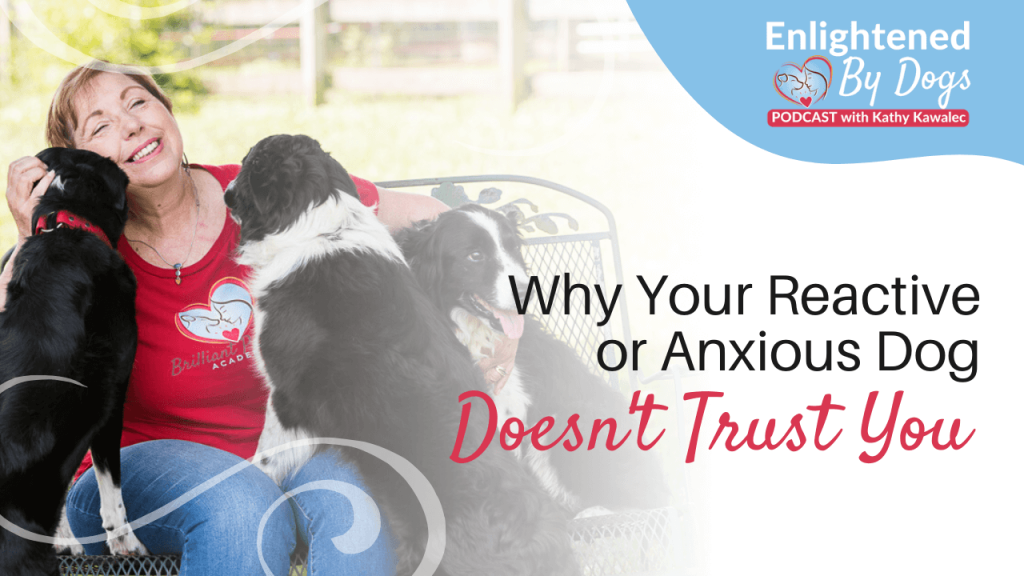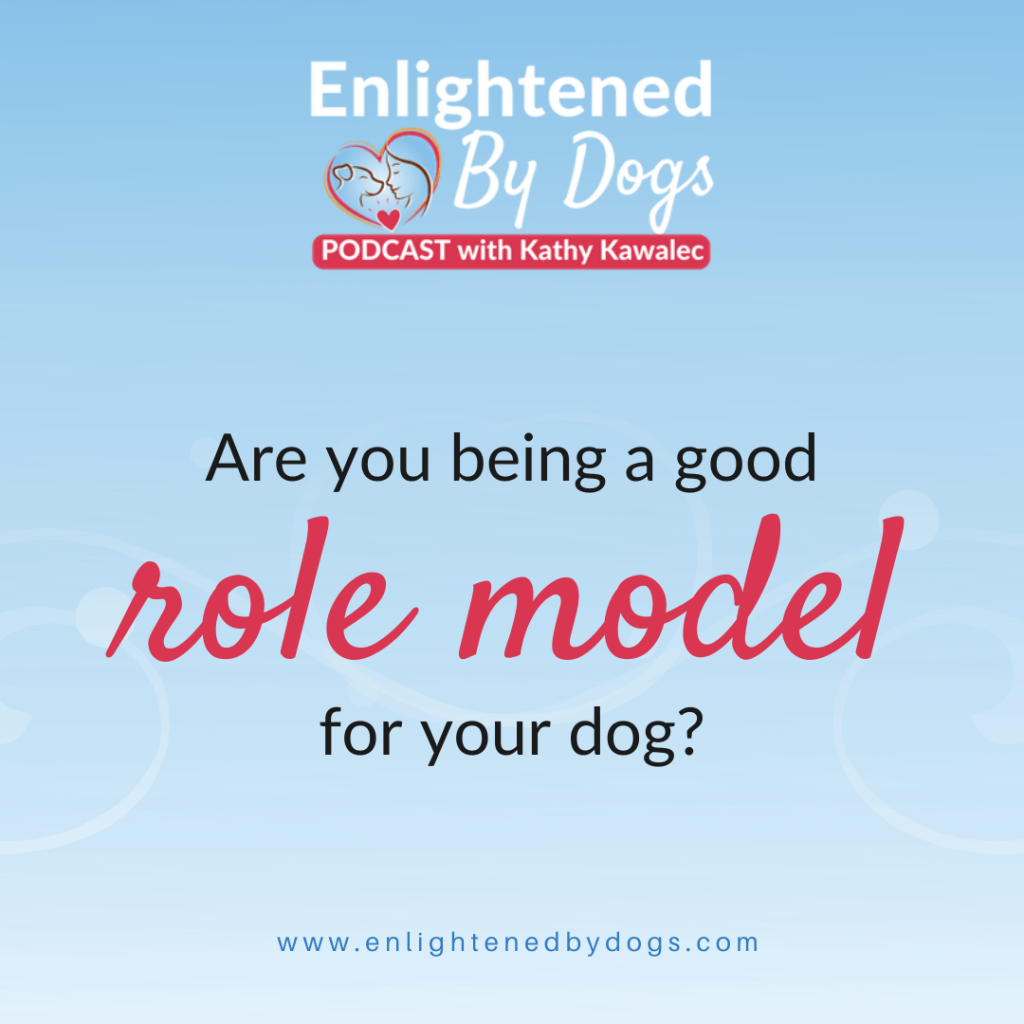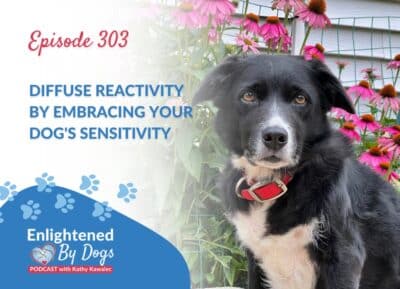If you have a dog that tends to be reactive to certain triggers (e.g. the postman, other dogs, the neighbors’ tabby cat, etc.) it can be really disheartening, frustrating and make you feel like your dog doesn’t trust you to keep them safe. You may be trying your best to support your dog and yet, it seems like their reactivity is getting worse instead of better.
Well, there’s a reason why your reactive, hypersensitive, distracted, fearful, worried or anxious dog doesn’t trust you.
But don’t worry, I’m going to help you turn things around and rebuild the trust between you and your best friend. I’m going to take you through the steps required to help stop the trust and confidence leaks in your relationship with your dog, so let’s get into it!
We trust our dogs… so why don’t they trust us?
Our dogs are more than our pets. They are our faithful companions and we do everything in our power to make them feel loved and appreciated.
So, when our dogs become reactive, we’re left scratching our heads wondering what on earth is going on?
Although reactive behavior is fairly common, it’s usually not welcomed with open arms. This is because it’s often connected to a negative response of some kind. Perhaps your dog lunges towards other dogs and it takes all of your strength to hold them back? Or, maybe your dog ducks under the table when people come to visit?
Reactive behavior has many faces. For some dogs, it is barking hysterically whenever the postman swings by. For others, it comes in the form of panting, pacing, whining, and so on.
Reactions differ but the root of the problem remains the same. When your dog is reactive, it’s because they feel uncomfortable, unsafe, and/or unhappy about the situation they’re currently in.
The problem is that the common approach that most people take to “fix” the problem actually makes things worse. The reason being is that a lot of training methods don’t focus on building the connection we have with our dogs. What ends up happening is that we use ill-advised tactics that actually damage our relationship with our dogs even further.
Our dogs need loving leaders!
On one of my previous blog posts and on episode 91 of the Enlightened By Dogs podcast, I shared my story with Phoenix. Phoenix was my hardest dog, but she also taught me a lot of important lessons.
One of those lessons was the importance of being a loving leader for our dogs. Dogs need love, but they also need some structure, guidance and boundaries. When we provide all of these things for our dogs, it really helps them thrive.
Our reactive dogs need good, strong and loving leaders. It’s not about dominating your dog, that’s not what we’re about here! It’s about being a loving partner for your dog and building an unbreakable bond.
It’s really up to you to take responsibility for being the kind of human that your dog loves to follow, loves to listen to and loves to partner with. This foundation is known as a partnership. It needs to be well established before you can even think about moving your dog into more speciality training like herding or agility.
“It’s really up to us to take responsibility for being the kind of human that our dogs love to follow, love to listen to and love to partner with.”
Building the foundation
Lacking a partnership with your dog leaves your dog open to certain struggles. They may develop issues, fears and triggers that cause them to be reactive.
You need a solid foundation so that your dog can thrive, and you can both enjoy a long and happy life together. It takes commitment and consistency. Above all else, though, it requires you to develop your skills as your dog’s partner, leader and supporter.
This is one of the main concepts I live by and teach inside the Brilliant Partners Academy, a community of women who are kind, compassionate, supportive and vulnerable to one another. We love our dog and we strive to be ‘brilliant partners’ for our dogs each and every day.
If this sounds like something you would love to be a part of, come join us! You can request your invitation to join here.
What does “loving leadership” look like?
Loving leadership is the key ingredient for a happy dog. But what does a loving leadership look like?
If you ask me, loving leadership is about being solution-focused, not problem-focused. If our dogs are feeling anxious or fearful, a loving leader should have the ability to calm and focus that dog. Yes, it’s easier said than done. But, being a great leader for your dog is a learnable skill.
Making your dog feel calm, safe and comfortable allows them to blossom and reach their full potential of who they are as individuals in your family group. You must lead by example. Dogs often mimic those around them. They can sense when you’re feeling anxious, upset, fearful, frustrated, and so on.
I’m not saying that you can’t feel any of those things if you want to be a good leader for your dog. But, keep in mind that when you’re calm and happy, your dog is more likely to be calm and happy too. When you’re anxious because there’s another dog approaching you while you’re out walking, your dog is going to feel anxious too.
Dogs are socially intelligent animals and learn a lot through role modeling. They learn from those around them, and this is something to keep in mind throughout your life with your dog.
Our dogs need to understand how to co-exist with us. But they also need to learn how to communicate and how to be responsible for fitting into the family group.
Stop the trust and confidence leaks!
If you’re serious about developing a partnership lifestyle with your dog, you’ve got to put a stop to the trust and confidence leaks.
Imagine your relationship with your dog is like a faucet. And, every time you make your dog do something that makes them feel uncomfortable, fearful, or anxious, etc., the faucet leaks. However, it’s not leaking water – oh no. It’s leaking your dog’s trust and confidence in YOU as their leader and it’s leaking your trust in yourself.
“The longer you keep that faucet open, the worse condition your relationship becomes.”
You need to STOP the trust and confidence leaks!
Let me put this into perspective for you. Imagine that you and I are best friends. We love to get out into nature and go for hikes. One day, we’re happily walking along, chatting about this and that when all of a sudden, a huge spider drops out of a tree and plops on your head.
Gosh, it’s awful just thinking about it, right? You happen to have arachnophobia, which is a fear of spiders. After this happens, you feel uncomfortable and so the walk is cut short. The next time we go out, you’re on edge because you’re worried another spider will fall on you. So, we try a different walk. However, you’re still checking your arms and brushing yourself down (just in case).
Me, on the other hand, I’m getting frustrated. I mean, it was just a spider can we please get over it and move on? I say things like “they’re more afraid of you than you are of them”, which just makes you even more mad on the inside (even though you’ve got your best poker face on).
The next day, you don’t want to go for a walk. So, I tempt you with some chocolate snacks and it works like magic. However, the spiders keep showing up. And, I keep making you walk with me and I don’t really help you overcome your spider phobia. Our relationship is suffering and it’s very strained. Eventually, we just stop walking together because it’s too stressful.
Now, imagine you are me in this story and your friend is actually your dog. The spiders are other dogs, cats, cyclists, cars, and so on. It’s clear that your dog is uncomfortable, but you don’t know what to do about it. So, the trust and confidence continue to leak until there’s barely anything left.
It sounds like a nightmare, right? You might even be nodding along at how familiar this scenario sounds! Thankfully, there is something you can do to help seal the leak for good.
The 3 clarity questions
If your dog is reactive, here’s what you need to do to stop the leaks. You need to ask yourself the following three clarity questions. The catch is that you need to get three yes’. Not one yes, not two, you need all three!
Ask yourself these three questions before you begin an activity with your dog and before you make a decision concerning your dog.
- Is this activity going to build trust between us and individually?
- Is this thing going to build confidence, self-confidence, and confidence in each other?
- Is this thing going to be a baby step toward our mutually agreed desired outcome?
If you can’t get three yes’, you should forget about following through with that activity. Doing that activity is not going to seal the leak, it’s going to make the leak get even worse.
You might need to find a different activity that does answer yes to all three of these clarity questions. If you do get three yes’, then go for it! You’ve found a potentially great activity that you and your dog will both enjoy.
The longer you keep the faucet open, the worse condition your relationship with your dog becomes. Not only that, but it’ll get even harder to get back to living a brilliant life with your dog.
You can listen to everything I talked about in this blog post over on my podcast – Enlightened By Dogs. It’s episode 93, which you can listen to here.
If you’d like to work with me and learn how to create a partnership lifestyle for you and your dog, you can request an invitation to join us in the Brilliant Partners Academy when the doors open for the next enrolment!
Watch a short video trailer of the episode below:






